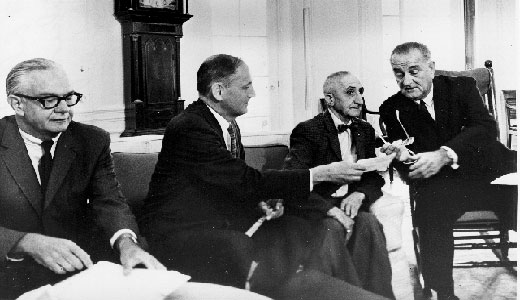
On July 30, 1965, President Lyndon Johnson signed legislation establishing Medicare and Medicaid. It came after decades of struggle.
The movement for national health insurance dates back to the struggles of the Great Depression of the 1920s and ’30s, and the New Deal. It was strongly opposed by the medical establishment, including the American Medical Association. A key turning point, according to historian Peter Corning, came in 1957 when the executive council of the AFL-CIO committed the labor federation to an “all-out battle for government health insurance.”
“Government health insurance was pressed as labor’s number-one legislative priority, and organized labor became the rallying point for all those who favored the measure,” Corning wrote.
Medicare and Medicaid were signed into law in 1965 as an amendment to the Social Security Act of 1935. Medicare provided hospital and medical insurance for Americans age 65 or older. In 1972, eligibility for Medicare was extended to people under 65 with certain disabilities, and people of all ages with kidney disease requiring dialysis or transplant. Medicaid, a state and federally funded program, offers health coverage to low-income people.
Some 19 million people enrolled in Medicare when it went into effect in 1966. By 2010, Medicare provided health insurance to 48 million Americans – 40 million people age 65 and older and 8 million younger people with disabilities. Medicare and Medicaid serve a large population of seniors, sick, disabled, and low-income people, most of whom would be unable to afford health care otherwise.
Photo: President Lyndon Johnson (right), Secretary of Health, Education and Welfare John Gardner (second from left) and Social Security Administration Commissioner Bob Ball (left) received the first Medicare Part B application from a member of the general public, Tony Palcaorolla of Baltimore, Md., (next to President Johnson), Sept. 1, 1965. SSA History Archives










